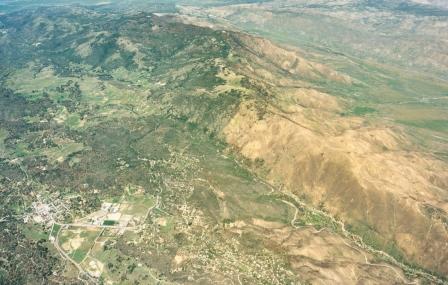
Geology
The oldest rocks identified in San Diego County date from the middle of the Mesozoic era-age of the dinosaurs- 190 to 150 million years ago. The land in the southwest formed an island arc, similar to Japan. To the west was a deep sea trench and to the east a shallow sea. This geological pattern forms what is called a “subduction zone”, where one plate of the earth crust slides beneath another. The Pacific plate to the west slid into the North American plate to the East. This action created long periods of great volcanic activity, followed by erosion processes.
Millions of years ago, the Pacific coast of Mexico and Southern California started to break up. The Pacific Plate began to move northwest relative to the North American plate. This caused a renewal of volcanic activity. The stress of this movement formed the San Andreas Fault zone. The Southern California ‘Batholith’ rose out of the molten mantle beneath it all. Envision big bubbles of liquid rock which combined with the shallow sea floor as it rose; creating a diversity of rock formations.
The flat plain that had been the west coastal area, tipped upward like a giant wedge, forming the Peninsular Ranges from south of Los Angeles to the center of Baja California, of which Volcan Mountain is a part.
Jurassic/Cretaceous rocks of the batholithic period are composed of undifferentiated granite and tonalities. Also found is Triassic metamorphic rock composed of micaceous schist, gneiss and quartzite, known as Julian schist. The Julian schist that became exposed through erosion was found to be layered with rich ore-bearing quartz containing gold of unusually high grade (940-980 fine).

Driving east from San Diego, you climb the gentle slope of this tipped mountain area, to the top of Volcan, where you look east to where the mountain drops quickly down the gulf escarpment on the east face to the Salton Sea depression. Tectonic activity is still in process as can be seen by the slanting vertical patterns on watersheds and smaller canyons on the north flank of Banner Canyon.
The Volcan area is capable of a 7.3 earthquake. Most recently, on Easter Sunday, April 2010, a 7.2 earthquake reverberating from El Centro did rock the Julian area. The Elsinore Fault, a sub-parallel fracture of the San Andreas Fault, traverses Volcan Mountain in a northwest/southeast direction. It has produced many small earthquakes over the past years. We feel the earth move under our feet in the Volcan region!